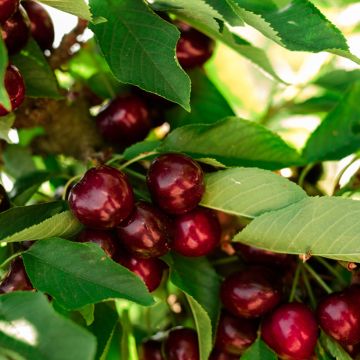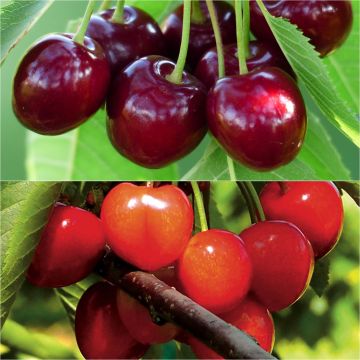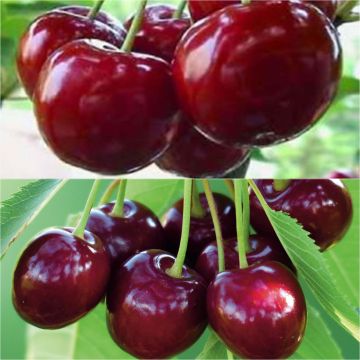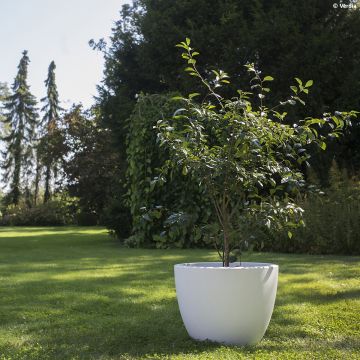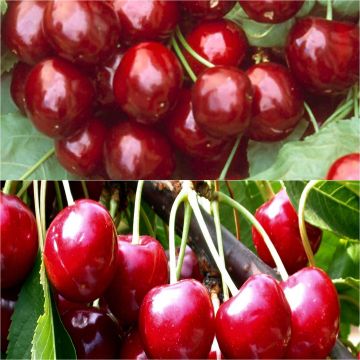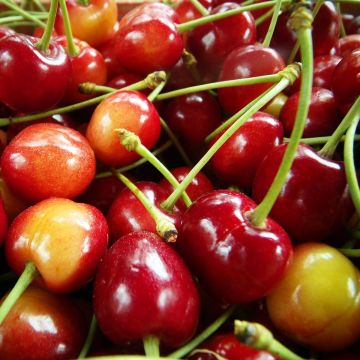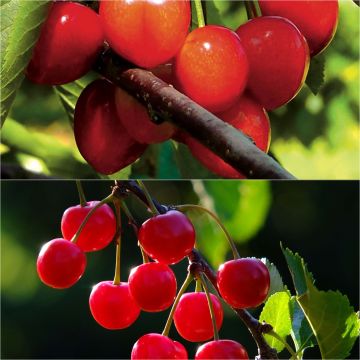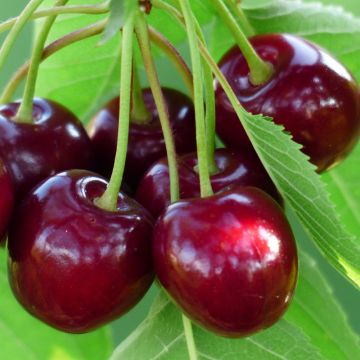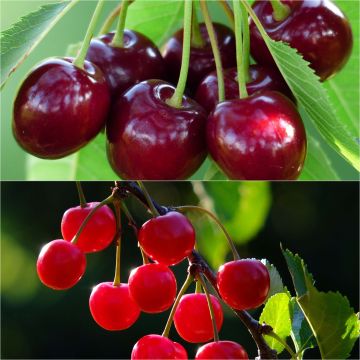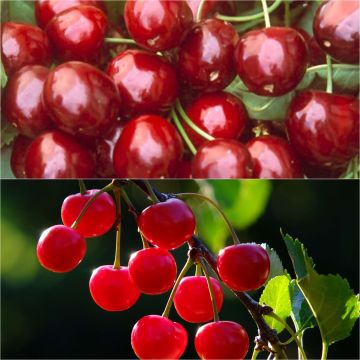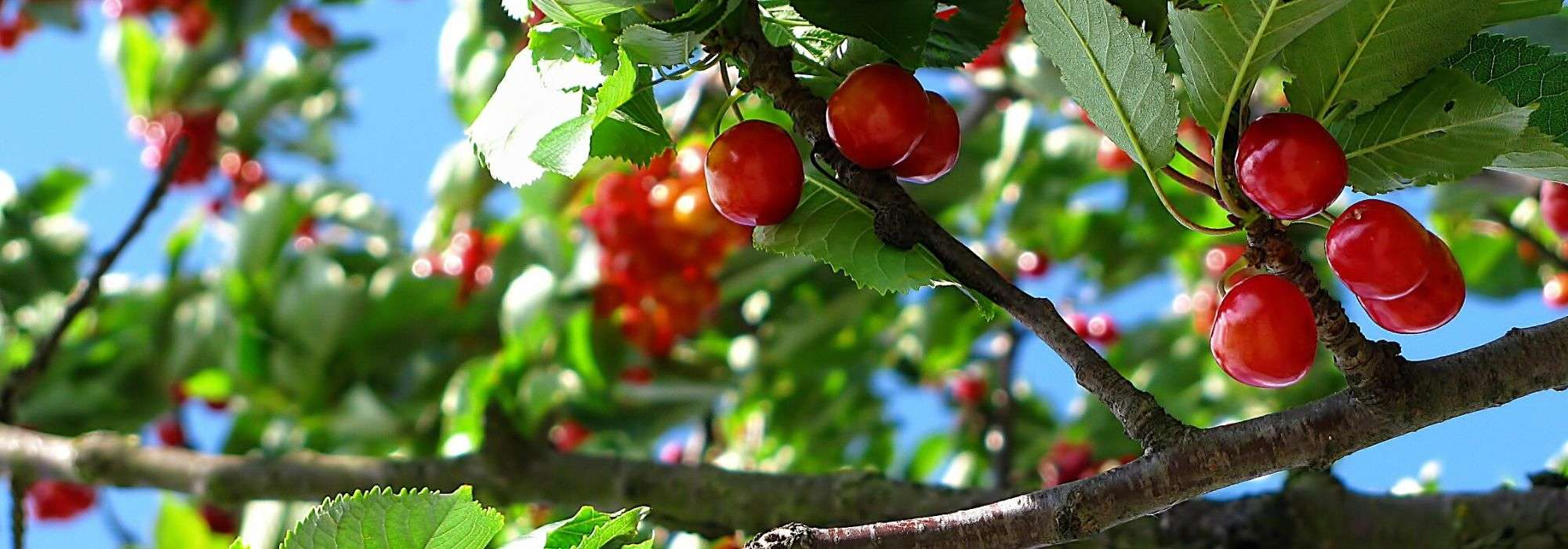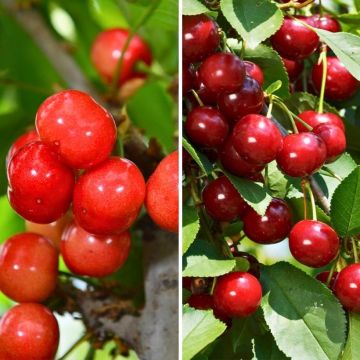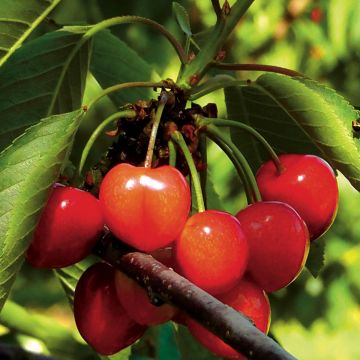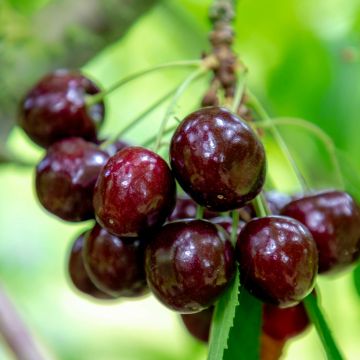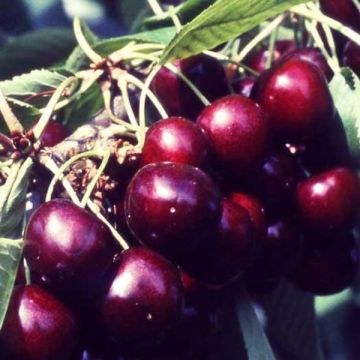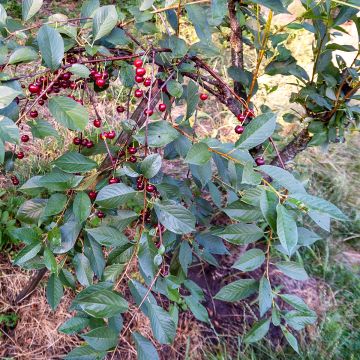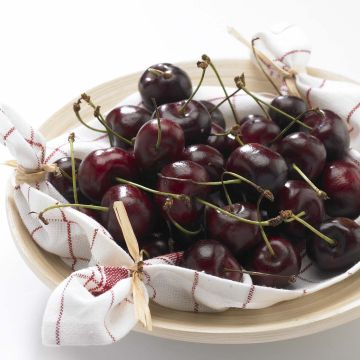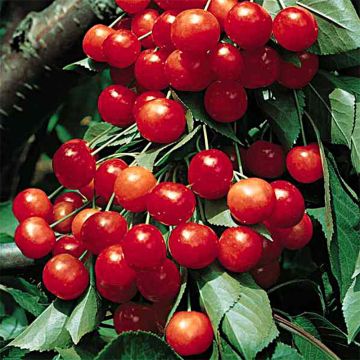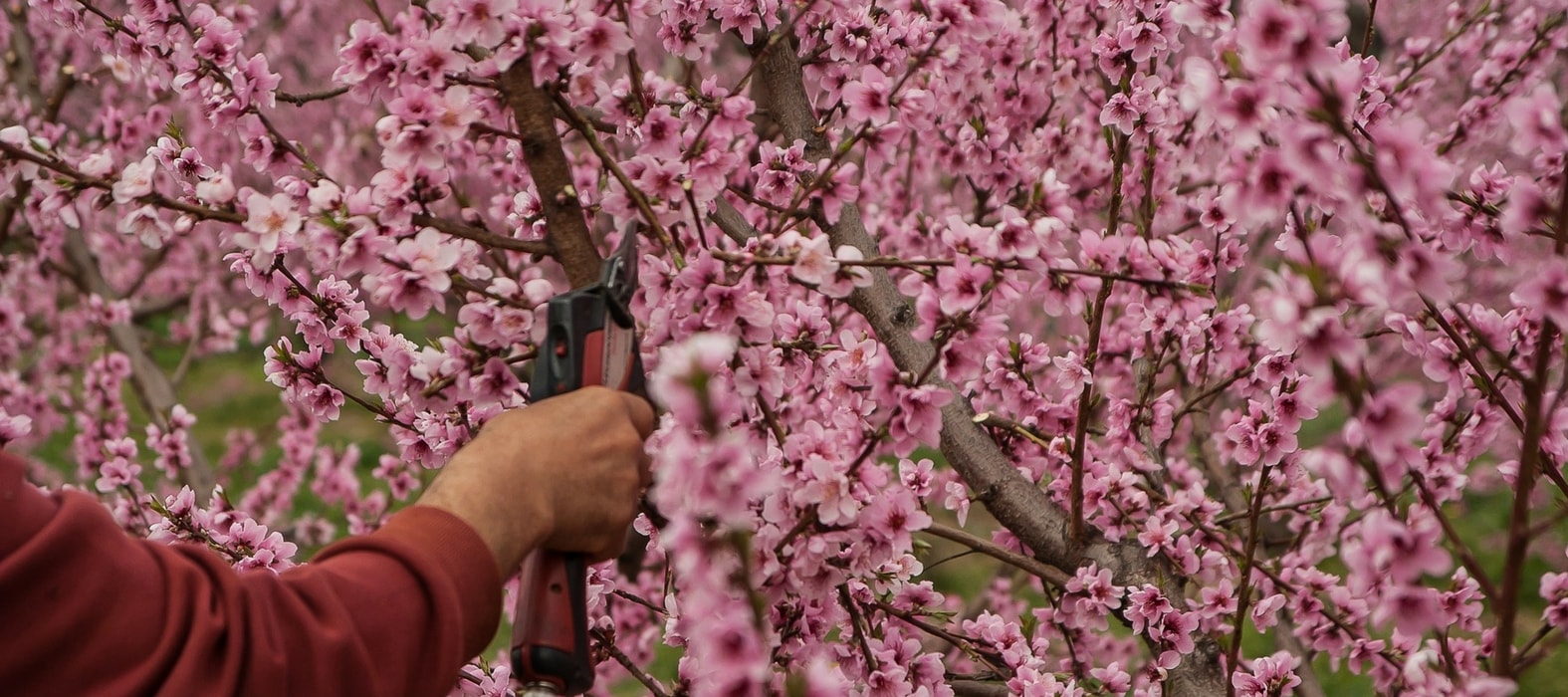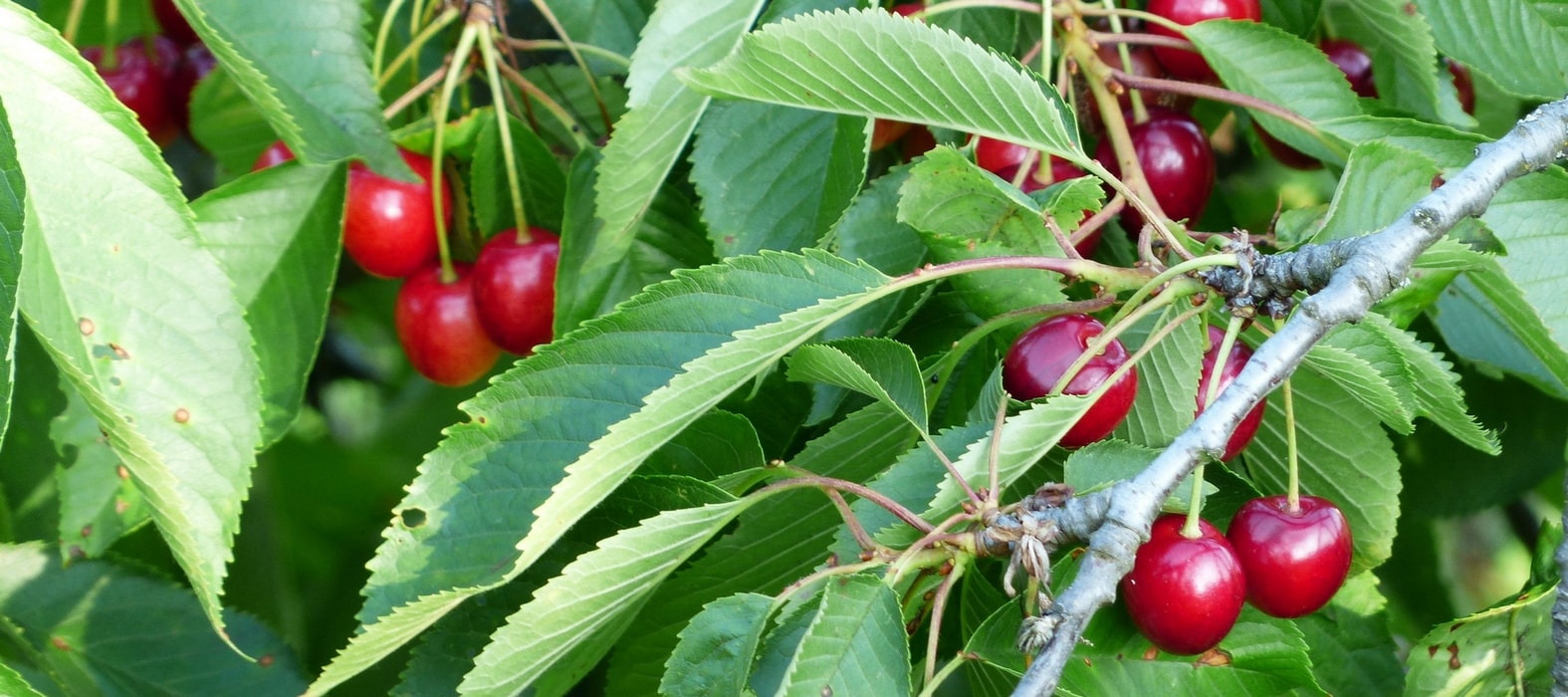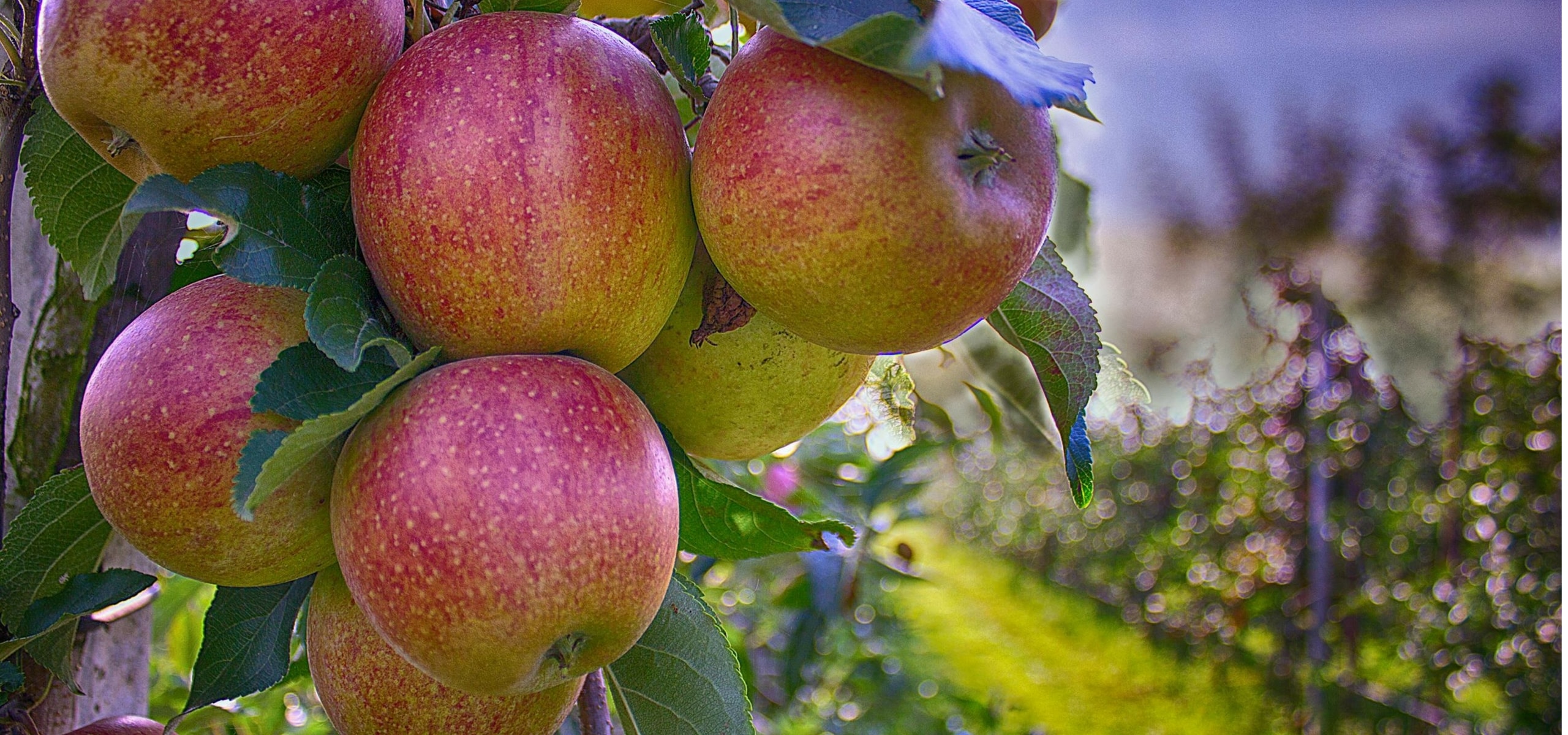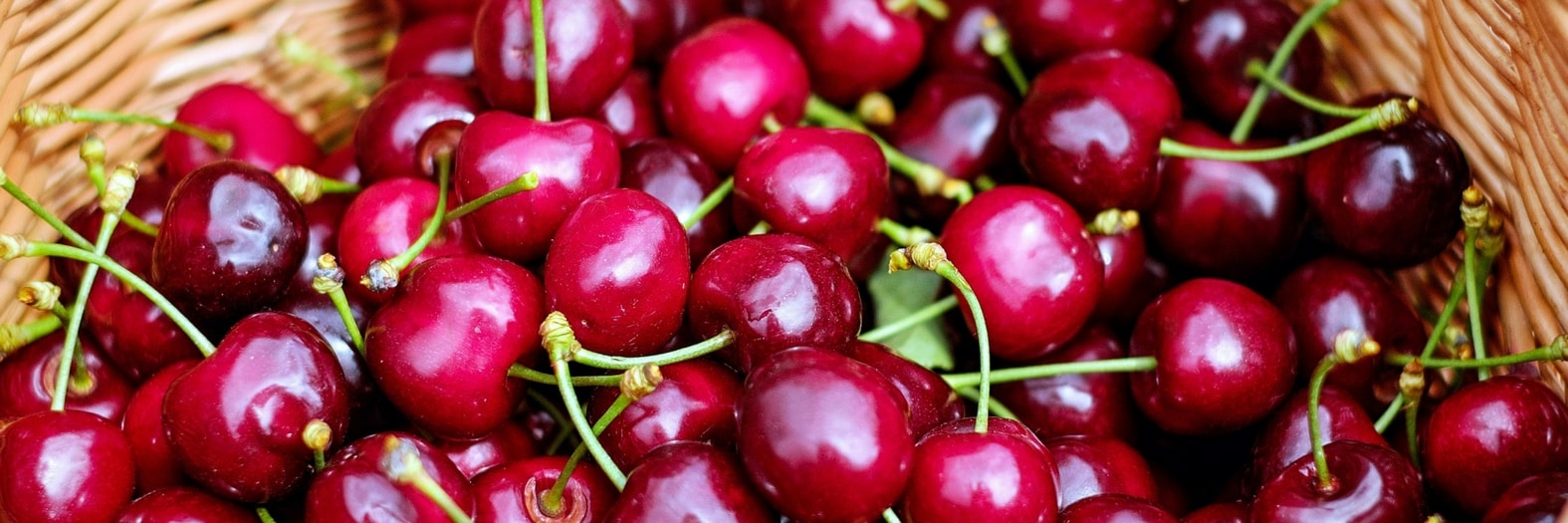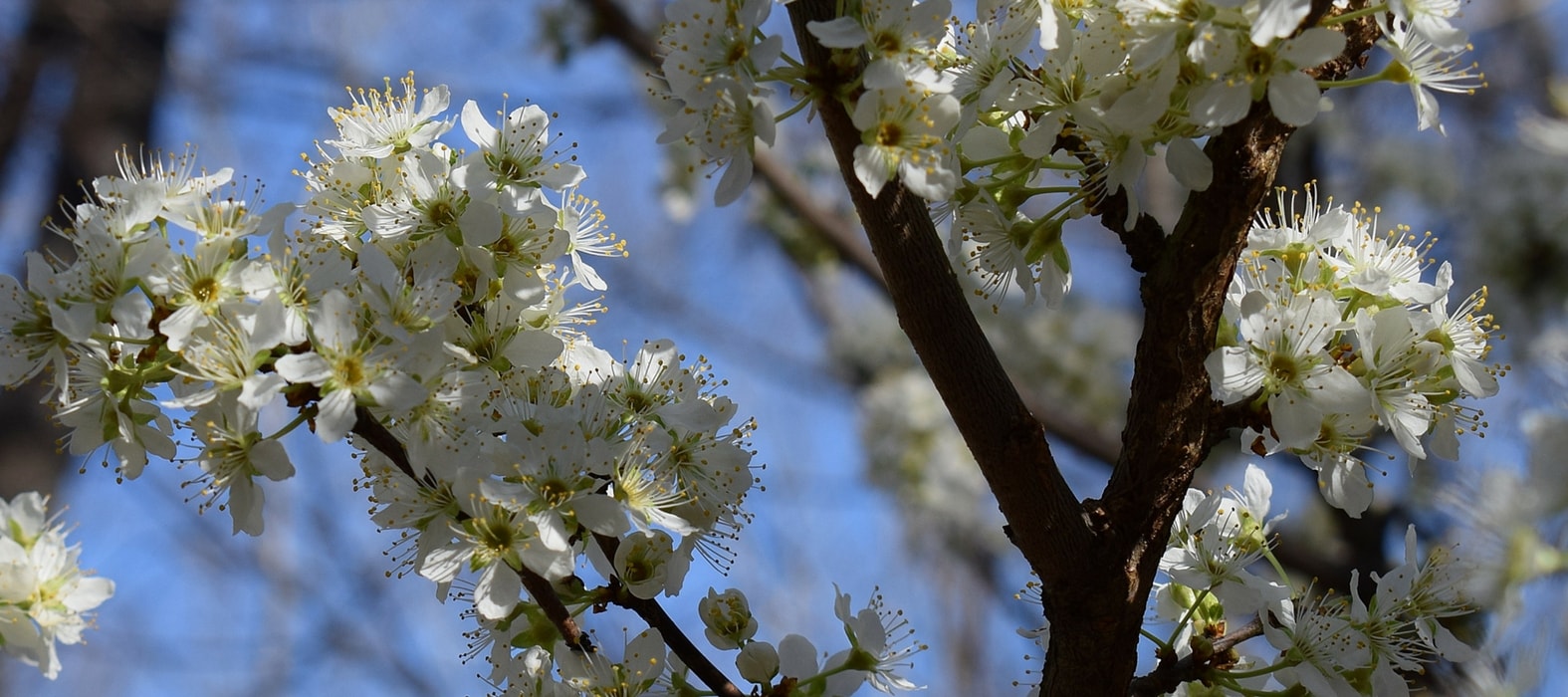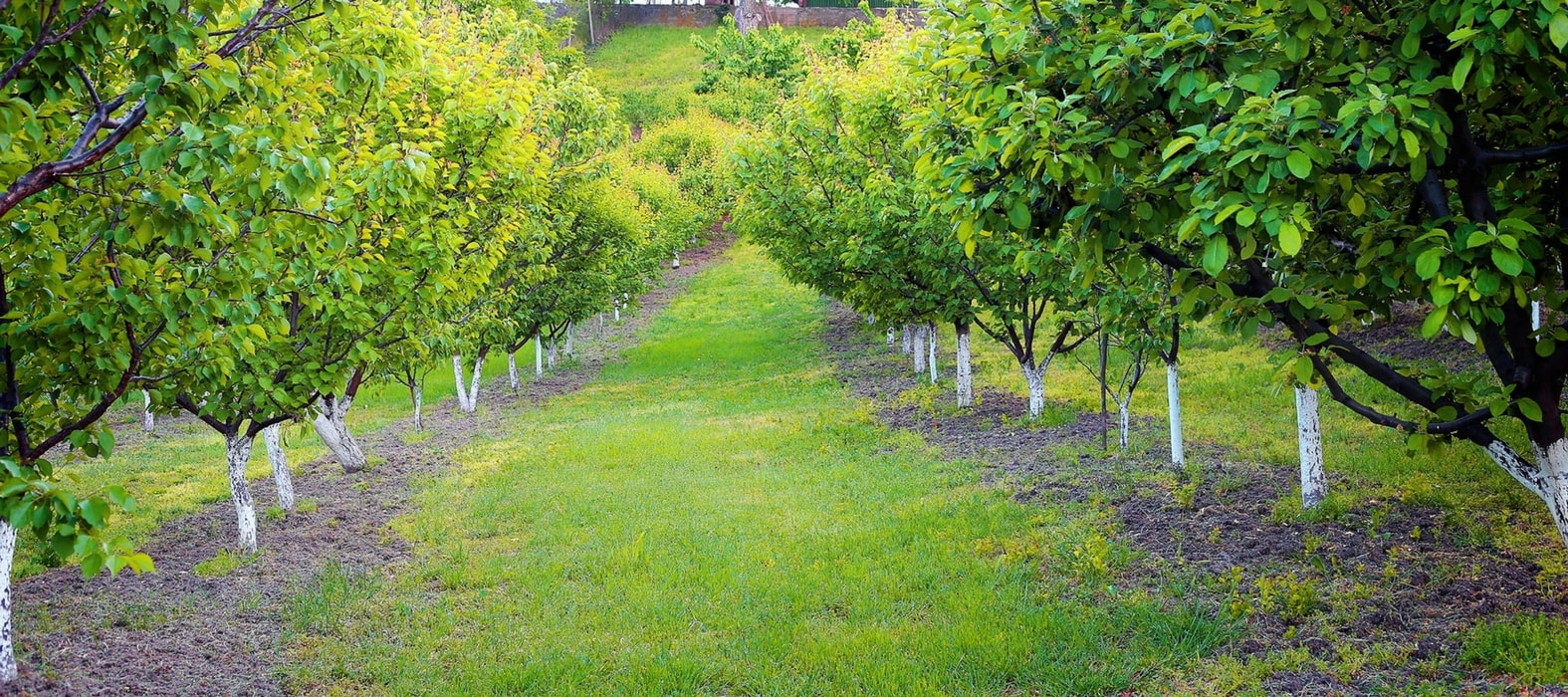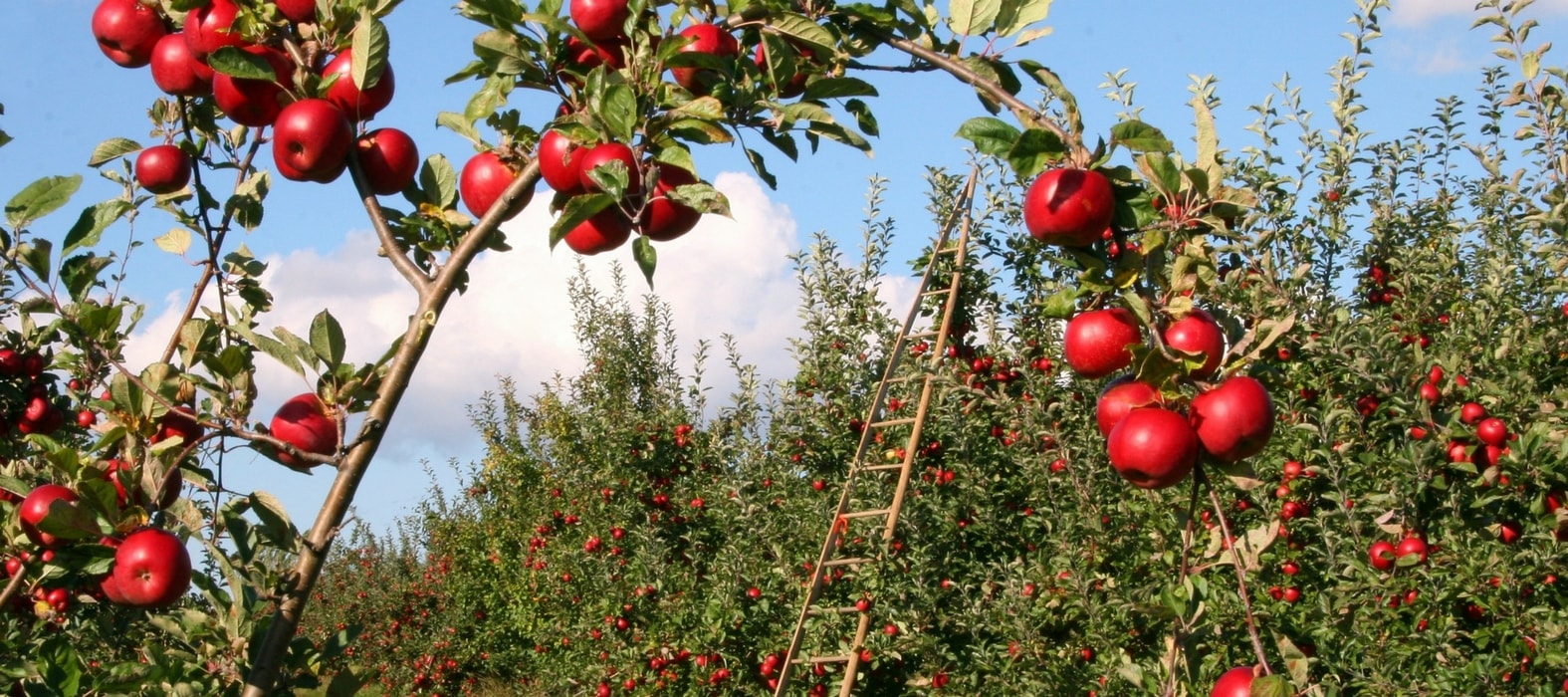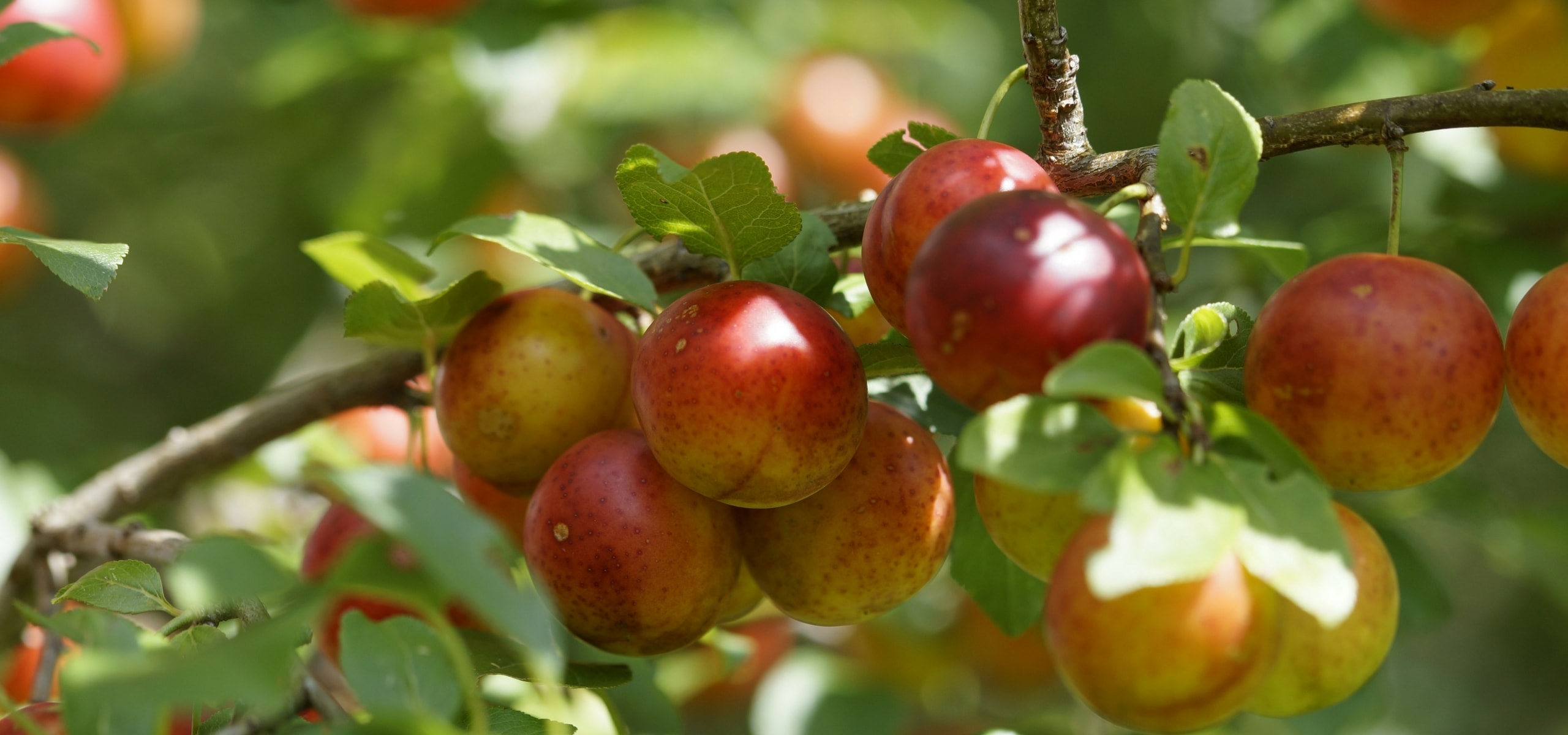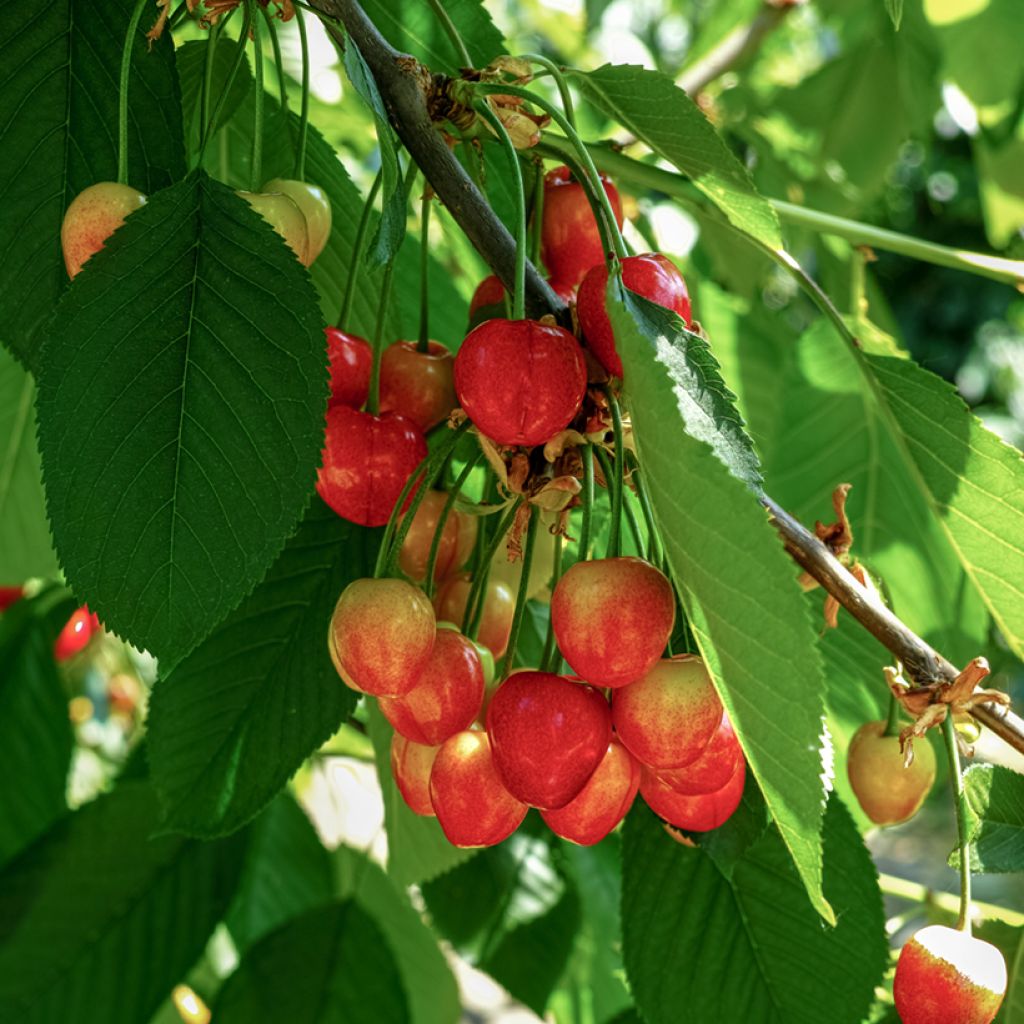

Prunus avium Büttners Rote Knorpelkirsche- Cherry Tree
Prunus avium Büttners Rote Knorpelkirsche- Cherry Tree
Prunus avium 'POZNAŃSKA' Büttners Rote Knorpelkirsche
Wild Cherry, Sweet Cherry
Special offer!
Receive a €20 voucher for any order over €90 (excluding delivery costs, credit notes, and plastic-free options)!
1- Add your favorite plants to your cart.
2- Once you have reached €90, confirm your order (you can even choose the delivery date!).
3- As soon as your order is shipped, you will receive an email containing your voucher code, valid for 3 months (90 days).
Your voucher is unique and can only be used once, for any order with a minimum value of €20, excluding delivery costs.
Can be combined with other current offers, non-divisible and non-refundable.
Why not try an alternative variety in stock?
View all →This plant carries a 6 months recovery warranty
More information
We guarantee the quality of our plants for a full growing cycle, and will replace at our expense any plant that fails to recover under normal climatic and planting conditions.
Description
Prunus avium 'Büttners Rote Knorpelkirsche' is a historical variety of Cherry tree appreciated for over two centuries for its sweet cherries with a surprising watermelon aroma. Forming a medium-sized tree with a pyramidal habit, this Cherry tree is easy to grow, thriving in slightly moist soils in sunny locations. Not self-fertile, it requires the presence of another variety to pollinate it.
The Cherry tree belongs to the extensive Rosaceae family, rich in about 5000 species, including most temperate climate fruit trees (Apple tree, Apricot tree, Plum tree...), numerous ornamental plants, and wild plants from the countryside and forests. Prunus avium, the Latin name for the Wild Cherry tree or Gean, is likely native to Anatolia and the Caucasus, and was early on cultivated and spread by humans. In nature, it forms a large tree easily exceeding 20 m in height, with rapid growth (15 m in 20 years). it is found in the woods of plains, hills, and even mountainous areas, preferring fertile and moist soils.
'Büttners Rote Knorpelkirsche' is a very old variety, discovered in 1795 in northern Germany near the town of Halle by Carl Gottlieb Büttner, hence its name that can be translated as Büttner's red cartilage cherry. In the early 2000s, it was renamed 'Altenburger Melonenkirsche', literally "Altenburg melon cherry" (a town in eastern Germany), due to the particularly unique taste of its fruits. This Cherry tree forms a medium-sized tree, reaching 5 to 6 m in height and 4 to 5 m in spread, with relatively fast growth (40 to 60 cm per year). It has a conical to pyramidal habit, with a slightly rounded crown at the top. Its foliage is typical, composed of elongated elliptical, finely toothed, medium green leaves. In April or May, in colder regions, it produces beautiful white, simple flowers with rounded petals incapable of self-pollination (self-sterile). To achieve cross-fertilisation, and thus eventually a harvest, it is necessary to plant a nearby pollinating variety, such as 'Hedelfingen', 'Regina', 'Kordia', 'Stella', 'Van', 'Schneiders späte Knorpelkirsche', 'Große schwarze Knorpelkirsche', 'Kassins Frühe', or 'Burlat'. Once pollinated by the pollen of the other variety, the flowers develop into large yellow fruits that redden on their sun-exposed side. the large, heart-shaped cherries are shiny and carried by 5 cm peduncles. They can be harvested from late June (depending on the climatic zone), their moderately juicy yellow flesh is very sweet, with a slight hint of acidity, and notably with a small watermelon aroma that sets it apart from other varieties. The flesh adheres fairly firmly to the stone, but the almost colourless juice allows it to be enjoyed without risk of staining. Excellent fresh, it can also be preserved. The production is abundant and regular year after year, explaining the success of this variety throughout the ages.
Very hardy and able to thrive even at high altitudes, Cherry tree 'Büttners Rote Knorpelkirsche' deserves its place in the garden, planted alone on a lawn to facilitate picking, and can be the starting point of a small orchard. In a continental climate, plant alongside it a 'Mirabelle de Nancy' which will take over from August to offer you delicious small yellow plums. If space is limited, consider fruit shrubs, such as Raspberry bushes whose delicate and refined fruits only have a few metres to travel to your table. Redcurrant bushes are also real treats, easy to grow and beloved by children. And if you appreciate originality and ancient fruits, why not plant a Medlar tree (Mespilus germanica) whose fruits, which must undergo frost before consumption, will extend the harvesting period of your orchard.
Plant habit
Fruit
Flowering
Foliage
Botanical data
Prunus
avium
'POZNAŃSKA' Büttners Rote Knorpelkirsche
Rosaceae
Wild Cherry, Sweet Cherry
Prunus avium ALTENBURGER MELONENKIRSCHE, Prunus avium 'Heinrichs Riessen'
Cultivar or hybrid
Other Cherry trees
View all →Planting and care
The easy to grow Cherry Tree 'Büttners Rote Knorpelkirsche' thrives in any type of soil, whether acidic or chalky. It prefers moist, light soils and dislikes heavy, clayey soils. Choose a sunny location. To reduce the risk of late frosts on the flowers, plant the Cherry Tree in a sheltered position, facing west and protected from cold winds in regions prone to spring frosts. Planting is best done in autumn. If planting multiple plants, space them 4 to 5 m apart for goblet-trained plants.
Loosen the soil deeply, remove rocks and unwanted weeds and add some sand to improve drainage. Dig a hole 4 to 5 times the size of the root ball. Keep the subsoil on one side and the topsoil on the other. Mix crushed horn, well-rotted compost or potting soil with the subsoil and pour this mixture into the planting hole. Install a stake. Place the root ball, cover with the topsoil, and firm down. Water generously (around 10 L). Tie the stake to the plant, crossing the tie in a figure-eight, without touching the trunk.
During cultivation, watering is not necessary except in hot weather. Mulch at the base to retain moisture in summer. Protect your harvest by using bird netting, aluminium foil, or old CDs. In the case of aphid infestation, spray water mixed with black soap. To combat cherry fruit fly, set up sticky cardboard traps or pheromone traps as soon as cherries form on the tree (this variety is usually not heavily affected).
Planting period
Intended location
Care
Planting & care advice
This item has not been reviewed yet - be the first to leave a review about it.
Haven't found what you were looking for?
Hardiness is the lowest winter temperature a plant can endure without suffering serious damage or even dying. However, hardiness is affected by location (a sheltered area, such as a patio), protection (winter cover) and soil type (hardiness is improved by well-drained soil).

Photo Sharing Terms & Conditions
In order to encourage gardeners to interact and share their experiences, Promesse de fleurs offers various media enabling content to be uploaded onto its Site - in particular via the ‘Photo sharing’ module.
The User agrees to refrain from:
- Posting any content that is illegal, prejudicial, insulting, racist, inciteful to hatred, revisionist, contrary to public decency, that infringes on privacy or on the privacy rights of third parties, in particular the publicity rights of persons and goods, intellectual property rights, or the right to privacy.
- Submitting content on behalf of a third party;
- Impersonate the identity of a third party and/or publish any personal information about a third party;
In general, the User undertakes to refrain from any unethical behaviour.
All Content (in particular text, comments, files, images, photos, videos, creative works, etc.), which may be subject to property or intellectual property rights, image or other private rights, shall remain the property of the User, subject to the limited rights granted by the terms of the licence granted by Promesse de fleurs as stated below. Users are at liberty to publish or not to publish such Content on the Site, notably via the ‘Photo Sharing’ facility, and accept that this Content shall be made public and freely accessible, notably on the Internet.
Users further acknowledge, undertake to have ,and guarantee that they hold all necessary rights and permissions to publish such material on the Site, in particular with regard to the legislation in force pertaining to any privacy, property, intellectual property, image, or contractual rights, or rights of any other nature. By publishing such Content on the Site, Users acknowledge accepting full liability as publishers of the Content within the meaning of the law, and grant Promesse de fleurs, free of charge, an inclusive, worldwide licence for the said Content for the entire duration of its publication, including all reproduction, representation, up/downloading, displaying, performing, transmission, and storage rights.
Users also grant permission for their name to be linked to the Content and accept that this link may not always be made available.
By engaging in posting material, Users consent to their Content becoming automatically accessible on the Internet, in particular on other sites and/or blogs and/or web pages of the Promesse de fleurs site, including in particular social pages and the Promesse de fleurs catalogue.
Users may secure the removal of entrusted content free of charge by issuing a simple request via our contact form.
The flowering period indicated on our website applies to countries and regions located in USDA zone 8 (France, the United Kingdom, Ireland, the Netherlands, etc.)
It will vary according to where you live:
- In zones 9 to 10 (Italy, Spain, Greece, etc.), flowering will occur about 2 to 4 weeks earlier.
- In zones 6 to 7 (Germany, Poland, Slovenia, and lower mountainous regions), flowering will be delayed by 2 to 3 weeks.
- In zone 5 (Central Europe, Scandinavia), blooming will be delayed by 3 to 5 weeks.
In temperate climates, pruning of spring-flowering shrubs (forsythia, spireas, etc.) should be done just after flowering.
Pruning of summer-flowering shrubs (Indian Lilac, Perovskia, etc.) can be done in winter or spring.
In cold regions as well as with frost-sensitive plants, avoid pruning too early when severe frosts may still occur.
The planting period indicated on our website applies to countries and regions located in USDA zone 8 (France, United Kingdom, Ireland, Netherlands).
It will vary according to where you live:
- In Mediterranean zones (Marseille, Madrid, Milan, etc.), autumn and winter are the best planting periods.
- In continental zones (Strasbourg, Munich, Vienna, etc.), delay planting by 2 to 3 weeks in spring and bring it forward by 2 to 4 weeks in autumn.
- In mountainous regions (the Alps, Pyrenees, Carpathians, etc.), it is best to plant in late spring (May-June) or late summer (August-September).
The harvesting period indicated on our website applies to countries and regions in USDA zone 8 (France, England, Ireland, the Netherlands).
In colder areas (Scandinavia, Poland, Austria...) fruit and vegetable harvests are likely to be delayed by 3-4 weeks.
In warmer areas (Italy, Spain, Greece, etc.), harvesting will probably take place earlier, depending on weather conditions.
The sowing periods indicated on our website apply to countries and regions within USDA Zone 8 (France, UK, Ireland, Netherlands).
In colder areas (Scandinavia, Poland, Austria...), delay any outdoor sowing by 3-4 weeks, or sow under glass.
In warmer climes (Italy, Spain, Greece, etc.), bring outdoor sowing forward by a few weeks.






























